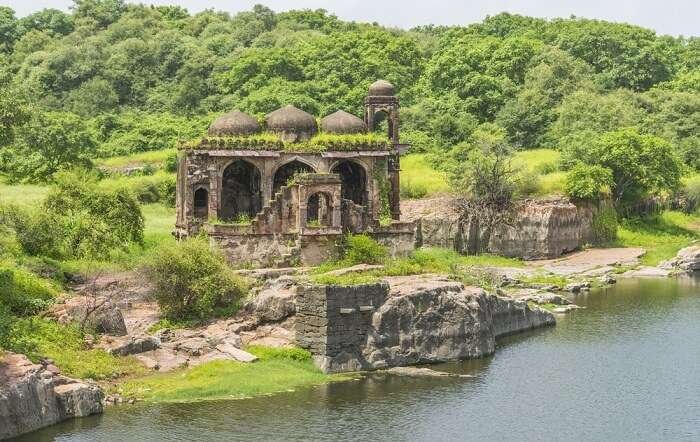History Of Sawai Madhopur, Rajasthan
The historical backdrop of Sawai Madhopur rotates around the Ranthambore National Park. The settlement around the fortification is the most seasoned here. Even though the birthplace of the stronghold isn’t actually realized it is accepted to go back to the eighth century. As per mainstream thinking, it was worked by Rajput Ruler Sapaldaksha in the year 944 Promotion. He had a place with the Chauhan family. As indicated by another school of thought, the post was built by Lord Jayant. He also was a Rajput Chauhan in around 1110 Promotion. Be that as it may, the most prevalent thinking is that the development of the fortress started amid the mid-tenth century and it proceeded for the following couple of hundreds of years. From the day of its origination till preceding freedom the post moved between various rulers.
The fortification of Ranthambore National Park was a crucial work for the leaders of this area as the exchange courses between North India, South, and Focal India. Under the standard of Rao Hammer, the last Chauhan leader of Ranthambore locale thrived brilliantly. He led from 1282 – 1301 Advertisement. It is essential to take note that in old India the area was all the more famously known as Ranthambore. It was a lot later than it got the name, Sawai Madhopur. It was in the 1300 Advertisement when Ranthambore needed to confront intrusions and assaults. Ala-ud-clamor Khilji, the Afghan ruler caught Delhi. He sent his troops to catch the stronghold of Ranthambore as well. Be that as it may, he was ineffective in his point multiple times. At last in1301 he vanquished the post. From this time till 1500 the fortress continued evolving hands. It was the Mughal Sovereign Akbar in 1558 who gave solidness to the district. He combined Ranthambore with his kingdom.
The Mughal rulers led the fortress till the eighteenth century. Amid the mid-eighteenth hundreds of years, the Maratha leaders of Western India were continuously picking up power. To put a beware of them the Rajput leader of Jaipur, Sawai Madho Singh, asked for the Mughal lord to hand the stronghold to him. Be that as it may, his request failed to be noticed. In 1763 the ruler braced the town of Sherpur and named it after himself, Sawai Madhopur. By and by this spot is known as the Sawai Madhopur city. After two years the Mughals gave over the stronghold to the Jaipur ruler. Amid the English Guideline, Sawai Man Singh assembled a railroad line among Jaipur and Sawai Madhopur. Thus, it ended up available from a focal spot in the province of Rajasthan. Today it has developed as one of the famous traveler goals in India. Sawai Madhopur was worked as an arranged city by Maharaja Sawai Madho Singh I of Jaipur on 19 January 1763, who named the township after himself. On 19 January, Sawai Madhopur praises its establishment day. Around 130 Km. to the north-east of Jaipur, along with the moving slopes of Vindhyas and Aravali ranges, lies the town of Sawai Madhopur.
The town was established in 1765 Promotion was named after its originator Sawai Madho Singh-I of Jaipur. Today Sawai Madhopur is known for Ranthambore, a Natural life save and a position of recorded significance. The Muslim victory realized significant changes in the political guide of northern India. In Rajasthan, the Chauhan kingdoms of sapadalaksa and Nodal dis-showed up; Govinda the grandson of Prithviraj Chauhan built up himself at Ranthambhore and administered as a feudatory of the Sultan of Delhi. Following unsettling influences after the demise of Iltutmish, Vagbhatta assaulted the stronghold of Ranthambore. He at that point ruled from here For a long time pursuing ceaseless fights against the Sultanate. Rao Hammer was one more figure who cut a specialty for himself. In the archives, it is just from time to time do we run over men of such valor. Rana Kumbha caught the Ranthambore Post at the center of the fifteenth century. After the passing of Aurangzeb, the stronghold was assumed control by the leaders of Jaipur.
History of Ranthambore National Park, Sawai Madhopur
The most seasoned settlement in the zone close to Sawai Madhopur was around the Ranthambhore fortress. The precise starting point of the Ranthambore post is as yet debated yet it is commonly acknowledged that there was a settlement at the site of the Fortification, as far back as the eighth century A.D. It is generally trusted that the development of the Ranthambhore Stronghold was begun amid the reign of the Chauhan Rajput Lord Sapaldaksha in 944 Promotion. Another hypothesis stipulates that Lord Jayant, additionally a Chauhan Rajput, constructed the Ranthambore Stronghold amid 1110 Advertisement. All things considered, the development of the fortification started amid the mid-tenth Century A.D. Furthermore, it proceeded for a couple of hundreds of years after that.
Since the Ranthambhore Stronghold controlled the exchange courses between North India and Focal India, it was exceptionally pined for by the leaders of North India. The Ranthambore Fortress had its brilliant minutes amid the rule of the lord Rao Hammer, the last leader of the Chauhan administration (1282 – 1301 Promotion). Amid 1300 Promotion, Ala-ud-racket Khilji, the leader of Delhi sent his military to catch the Fortification. After three ineffective endeavors, his military at long last vanquished the Ranthambhore Fortress in 1301 and finished the rule of the Chauhans. In the following three centuries the Ranthambore Fortification changed hands on various occasions, till Akbar, the incomparable Mughal head, at last, assumed control over the Post and broke down the Province of Ranthambore in 1558. The fortification remained in the ownership of the Mughal rulers till the mid-eighteenth century.
